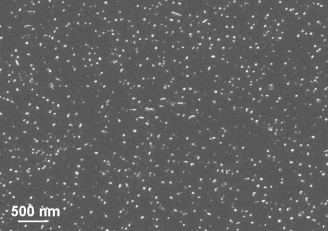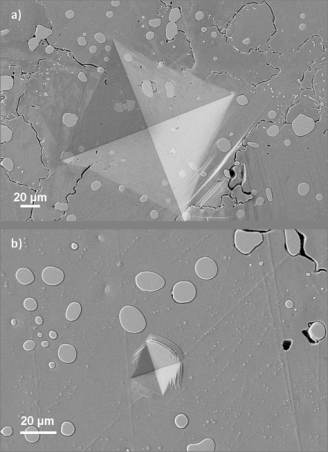Copyright 2012 neutronsources.org | All rights reserved. | Powered by FRM II | Imprint / Privacy Policy
Neutrons and X-rays help investigate new materials for gas turbines
23/04/2013
Since the period that followed the Second World War, gas turbines have developed to become more efficient, which led to increased gas temperatures inside the turbines. It is estimated that future gas turbines will function at temperatures about 200⁰C higher than today. The materials currently used cannot withstand such high temperatures. For this reason it is necessary to investigate new materials that resist to the severe conditions of temperature and loading of modern gas turbines.

Co-Re-based alloys: a new material for gas turbines
Co-based alloys are routinely used in static components of gas turbines. Dr Mukherji, in the group of Prof. J. Rösler from the Institute for Materials of the Technical University of Braunschweig in Germany, is investigating the structure of Co-Re-based alloys and their behaviour at high temperatures. These alloys are new for structural applications in gas turbines. By adding Rhenium (Re) to Cobalt (Co) alloys, it is possible to increase their melting temperature. The group aims to develop alloys where the base metal temperature with thermal barrier coatings reaches 1200⁰C.

Neutron and X-rays experiments to characterise structure
Neutron and X-rays experiments are ideal tools for studying structural changes in materials in situ at high temperatures. Dr Mukherji and team have extensively used these tools for characterising Co-Re-Cr alloys. NMI3 has supported experiments at the Budapest Neutron Centre to quantify the boron content and map boron distribution in Co-Re-Cr-alloys. Complementary measurements were performed at the Forschungsneutronenquelle Heinz Maier-Leibnitz (FRMII) and at the Engineering Materials Science Beamline at the Helmholtz-Zentrum Geesthacht outstation at the Deutsches Elektronen-Synchrotron in Germany.
These researchers wanted to investigate the effect of boron doping in Co-Re alloys and the stabilities of the fine tantalum carbide (TaC) precipitates at high temperatures. The group observed that a fine dispersion of TaC precipitates strengthens some Co-Re alloys and these precipitates remain generally stable when exposed to high temperatures.
Looking at the future
Experiments with neutron and synchrotron probes are providing fundamental information in understanding the Co-Re-Cr system. By using these tools, this group of researchers could observe microstructural involution in-situ at high temperatures. Further research is still necessary before a technical alloy will become available for structural applications in turbines but the future looks promising!
Original publications
D. Mukherji, J. Rösler, J. Wehrs, P. Strunz, P. Beran, R. Gilles, M. Hofmann, M. Hoelzel, H. Eckerlebe, L. Szentmklosi, Z. Macsik (2013), Application of In Situ Neutron and X-Ray Measurements at High Temperatures in the Development of Co-Re-Based Alloys for Gas Turbines, Metall. Mater. Trans. A, 44 (1), 22-29
D. Mukherji, J. Rösler, M. Krueger, M. Heilmaier, M.-C. Boelitz, R. Voelkl, U. Glatzel, L. Szentmiklosi (2012), The effects of boron addition on the microstructure and mechanical properties of Co–Re-based high-temperature alloys, Scr. Mater., 66, 60-63